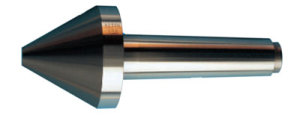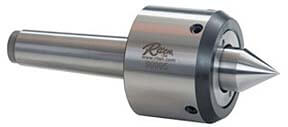- 800-338-0027
- Contact Us
PRODUCT SEARCH:
Enter a keyword or part number in the box below:
Carbide Bull Nose Dead Centers
Dead Center Applications
Riten “Fast-Trak” special bull nose dead centers are suitable for all machining and grinding applications.

Dead Center Availability
“Fast-Trak” carbide bull nose dead centers are readily available in 1-2 weeks. Morse Tapers are typically stocked, while other tapers are available on demand. These centers were designed to fit the need for a readily available off the shelf carbide tipped bull nose dead center. As the largest manufacturer of standard and custom dead centers in North America, Riten Industries recognized the need for a standardized carbide tipped bull nose dead center. Until that time, large carbide bull nose dead centers were strictly custom tools with lead times of six weeks or more.
Steel bull nose dead centers and steel pipe nose dead centers are also available. Click on the respective product name to go to the appropriate product page.
Different mounting tapers and custom variations of any Riten dead center can be designed using our on-line” design tool or by discussing your application with one of our product specialists.
Dead Center Technical Specifications – Bull Nose Carbide Dead Centers
Bull nose carbide dead centers feature a hollow ring of carbide brazed onto a one piece steel shank. Think of sliding a ring over your finger, where the ring is carbide and the finger is a solid piece of steel. This design allows the steel body to carry the weight of the work piece while reducing the size of the carbide tip. The result is a stronger tool that requires less carbide, keeping costs manageable without sacrificing functionality.
The steel shank is manufactured from 52100 ball bearing steel. Since the carbide tip is the wear surface in carbide tipped dead centers, only the knock out end of the steel shank is hardened. The carbide tip provides the hardness and wear resistance required for high production turning and grinding applications. Concentricity is guaranteed to .0002 inches TIR
Dead Center Regrind
Carbide tipped dead centers can be reground to extend the life of the dead center. Dead centers should be returned to the factory for inspection to determine the cost of regrinding the tool. The point angle will be reground to factory specifications and the concentricity of the point to the taper will be restored. If necessary, the mounting taper will be reground as well during the reconditioning process.

 * Part numbers for
* Part numbers for 